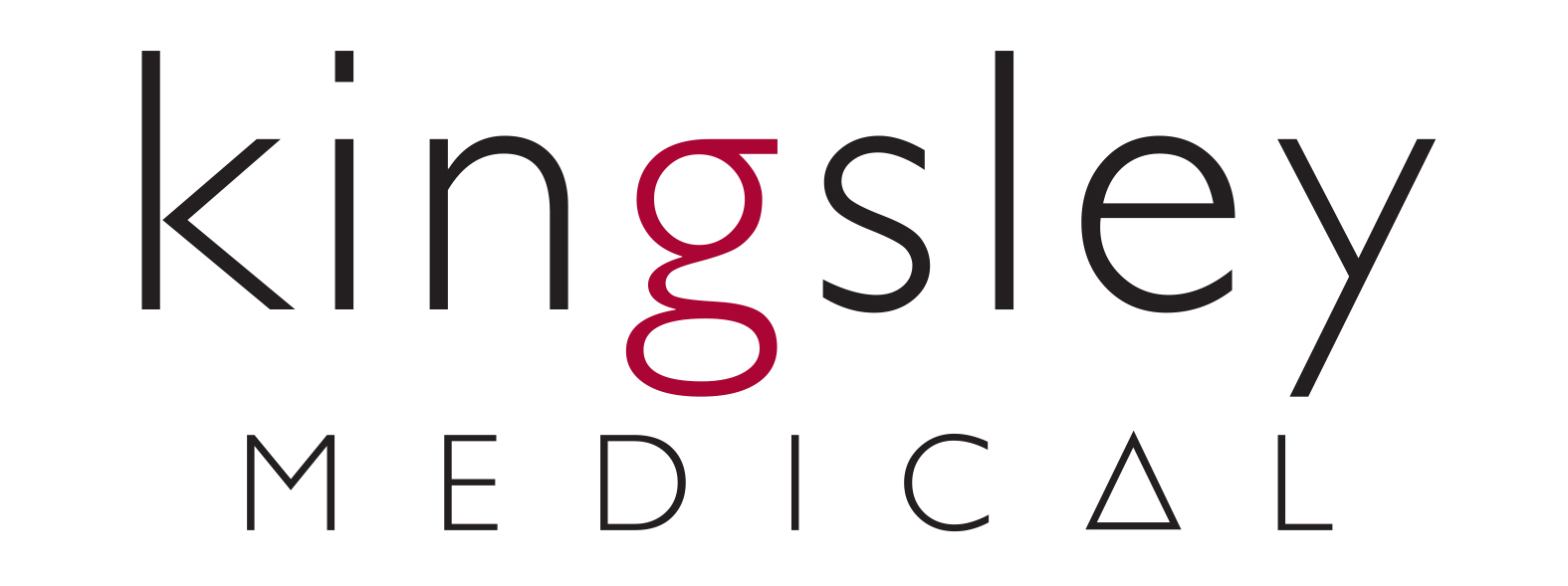Learning for life
At Kingsley Physiotherapy we believe that learning is an ongoing process and should be embraced at any opportunity. It is a means by which we can continue to develop and hone our skills. Perhaps beyond all else however, education (in any form,) provides us with the opportunity for reflection – to realise what we don’t know and how we can strive to lessen the gaps in our knowledge.
We are also concerned about the lack of mandatory post-graduate education in the physiotherapy profession (See “How we differ” for further details). To tackle this situation, we have established our “Learning for life” education curriculum. This programme has been developed as one of the most comprehensive private-practice based physiotherapy education programmes in Western Australia and is mandatory for all staff at Kingsley Physiotherapy. It does not include the additional external professional development courses undertaken by our therapists locally, interstate or overseas. Staff pursue such training in topics relevant to their professional interests and patient case-load.
In addition to their role as mentors for our junior staff, our senior physiotherapists also undertake weekly professional development. The ongoing education topics for senior staff focus on the management of chronic pathologies and patients with severe or concomitant illness. (If you would like to learn more about our senior staff-education programme, please email us).
Finally, all of our therapists are involved in our weekly “peer review programme”. This is an opportunity for staff to discuss the treatment of their chronic or challenging clinical cases. All patients who have received more than three consultations at our clinic are discussed during these sessions. Click here for more information.
We hope that by being transparent with the standards we set we will not only help patients to better understand the physiotherapy profession but also encourage other physiotherapy clinics to adopt the same high standards.
We encourage you to take the time to read our “Learning for life” programme (below) and we welcome your feedback. Please feel free to email us with your comments or suggestions.
Click on any of the topics listed below for a more detailed summary.
- Orthotic prescription and adjustment
- Footwear prescription
- Lower limb biomechanics
- Our top 40 clinical presentations
- High velocity/thrust manipulations
- Mulligan’s techniques
- Taping
- Dry needling and muscle release techniques
- Radiology and nuclear medicine
- Advanced treatment options
- Diagnostic physiotherapy
- Skin lesions
- The red-tape of private practice
- Communication
- Reviewing the literature
- Complementary medicine
1. Orthotic prescription and adjustment
Physiotherapists are introduced to the various types of orthotics that are available as well as both the footwear and sporting activity to which each of these orthotics is best suited. Assessing a patient for orthotics not only requires a sound understanding of the pathological process for which the orthotics are being prescribed but also an understanding of the particular stresses the orthotics are likely to encounter given the patient’s body type, lower limb biomechanics, sporting activities, footwear and occupation. Therapists are taught how to adjust and prescribe both off-the-shelf and hard orthotics for their patients. Therapists are guided through the means by which orthotics can be utilised in patients with narrow or wide feet as well as those with severe biomechanical dysfunction. Special consideration is given to the use of orthotics in paediatric, diabetic and elderly patients.
2. Footwear prescription
Therapists are taught how to advise patients on appropriate footwear for their specific sporting or vocational requirements. Topics include, shoe lacing techniques, sole and ‘last’ specifications, and the assessment of a shoe’s shock absorption and midfoot control. Staff at Kingsley Physiotherapy will not recommend specific brands of footwear nor will they advise patients on specific retail outlets from which to purchase shoes.
3. Lower limb biomechanics
Lower limb biomechanics in non-weight bearing, standing, gait/skills/running are analysed and related to the patient’s presenting pathology. Techniques to correct biomechanical errors by taping, strengthening, stretching, orthotics and ergonomic/postural advice are covered. Particular attention is paid to biomechanical analysis of toddlers, the athletic patient and the overweight patient.
4. Our Top 40 clinical presentations
Therapists are guided through the manual treatment options that are best suited to minimising patient recovery times in our 40 most common presentations. This list is compiled with data collected from our patients over the past 15 years. Treatments for each region of the body are covered separately. Treatment techniques include manipulation, mobilisation, Mulligan’s protocols, dry needling, taping, muscle energy techniques and soft tissue release methods. Pertinent exercise protocols relevant to each pathology are also covered. Click on any of the topics below for further details.
Our top-40 list:
Foot and ankle
- Plantar fasciitis/heel spurs
- Mortons Neuroma and stress fractures of the toes
- Acute, chronic and recurrent ankle sprains
- Achilles tendonitis/enthesitis
- Sever’s Disease
Shin and knee
- Shin splints
- Compartment syndrome
- Osgood Schlatters condition
- Patella tendonitis
- Patella femoral syndrome/retro-patella pain
- Bursitis of the knee
Hip, pelvis and abdomen
- Trochanteric bursitis
- Osteitis pubis
- Conjoint tendonopathy
- Recurrent and acute groin injuries (muscle and tendon injuries)
- Hip joint pathologies – Perthes condition, osteoarthritis, slipped upper femoral epiphysis
Lumbar spine
- Disc herniation/bulge/prolapse
- Sciatica/piriformis syndrome
- Spondylitis
- Facet joint arthropathy
Thoracic spine
- Costovertebral arthropathy
- Scheuermann’s disease
- Degenerative disc disease/facet arthropathy
Cervical spine and head
- Whiplash
- Headaches
- Migraines
- Cervical disc bulge
- Cervical facet arthropathy
Shoulder
- Subacromial impingement/bursitis/supraspinatus tendonitis
- Frozen shoulder/capsulitis
- Osteoarthritis – glenohumeral and acromioclavicular
- Rotator cuff and biceps injuries
Elbow
- Tennis elbow – lateral epicondylalgia
- Golfers elbow – medial epicondylalgia
Wrist and hand
- Carpal tunnel syndrome
- Cartilage injuries of the wrist
- Common finger fractures in the athlete
General conditions
- Osteoarthritis and rheumatoid arthritis
- Inflammatory and juvenile arthropathies(ankylosing spondylitis/autoimmune arthropathies)
- Fibromyalgia
- Vertigo
5. High velocity/thrust manipulations
Therapists reinforce their knowledge of spinal assessment. Indications and contra-indications of spinal thrust manipulation as well as alternatives to manipulation in high risk or difficult presentations are covered in detail. Therapists are guided through the process of clinical assessment and reasoning and taught ergonomic approaches to performing thrust manipulations of the cervical, thoracic and lumbar spine as well as peripheral joints.
6. Mulligan’s techniques
Therapists are introduced to the theory and application of Mulligan’s techniques to peripheral and spinal joints. Attention will be paid to the lumbar, thoracic and cervical spine/headaches, the knee, elbow and ankle. Correlation with commonly used Maitland techniques will also be addressed.
7. Taping
Taping applied to commonly presenting peripheral and spinal pathologies is covered in this part of the programme. These sessions aim to equip all therapists with a rudimentary selection of taping techniques and serve to act as a baseline for ALL therapists at the clinic. Therapists are shown how to document variations to these techniques so as to allow consistency between practitioners. Around 35 common taping techniques will be covered.
8. Dry needling and muscle release techniques
Muscle release techniques and dry needling for chronic inflammatory conditions, persistent muscular tightness and as a precursor to Procaine or Botox injections are covered in this section. Therapists will be taught techniques for myofascial release, frictional massage, connective tissue and scar tissue massage as well as ischaemic muscle pressure. The use of needling techniques to assist with the treatment of persistent muscular tightness (chronic whiplash, chronic lumbar and cervical radiculopathies, tennis/golfers elbow, carpal tunnel syndrome, compartment syndrome etc) and chronic inflammatory conditions (patella tendonitis, achillis tendonitis, bursitis [caution] and epicondylitis) will also be covered. (NB- this is NOT acupuncture)
9. Radiology and nuclear medicine
When to refer patients for imaging and how to interpret results – CT, MRI, Ultrasound, Doppler, bone scan, X-ray and bone densitometry. These interactive sessions cover the use of radiographic imaging in commonly presenting conditions. Therapists are given guidance on how to interpret scans and are shown methods to focus their clinical reasoning in order to reduce unnecessary referrals for such imaging. Topics covered include:
a) Situations in which it is appropriate to refer patients for imaging.
b) How imaging results effect the medical or physiotherapeutic management of the condition.
c) Which imaging technique is best suited to each condition.
d) How each technique is performed and the advice to give patients prior to imaging.
e) the use of contrast media in imaging – why, when and how?
The interpretation of the following imaging techniques will be covered: x-ray, ultrasound, Doppler, arthrography, CT, MR, radio-isotope imaging and nerve conduction studies. The evaluation of other imaging studies will also be covered – bone densitometry, angiography, MRf (MRa,v,p), discography/myelography.
10. Advanced treatment options
Therapists are encouraged to understand the scope of this profession’s capabilities and its limitations in managing musculoskeletal disorders. Therapists are informed of alternate medical, semi-invasive and surgical interventions for many commonly presenting musculoskeletal pathologies. This includes the pharmacological, psychological, surgical and pain-management options that are commonly used. Therapists are given guidance on how such interventions are performed and what to instruct their patients with regards to post-management care. The indications, contraindications and common side effects of frequently prescribed medications and surgical or semi-invasive techniques are also detailed.
11. Diagnostic physiotherapy
This involves the interpretation of clinical and medical results to form sound diagnoses. Therapists are encouraged to amalgamate the findings of medical assessments (blood tests, radiographic imaging etc) with knowledge derived from clinical examination (history taking, gait analysis and physical examination) in order to formalise and focus a diagnosis.
12. Skin lesions
Physiotherapists are in a unique position to evaluate skin lesions – they regularly see and work on regions of the body the patient may not have visualised. This part of the programme aims to equip therapists with the fundamentals of recognising benign as well as potentially malignant skin lesions.
13. The red tape of private-practice physiotherapy
Understanding the management of workers compensation, motor vehicle accident and Veterans Affairs patients. This (unavoidable) component of our continuing education programme aims to equip new graduates with knowledge regarding the billing and legal procedures involved with veterans affairs, workers compensation and motor vehicle accident patients.
14. Communication (Attendance is also mandatory for Reception staff)
Verbal and written communication guidelines are provided to all staff. The aim is to encourage and nurture formal and professional communication with doctors and other allied healthcare providers. Therapists are also guided on ways in which to communicate with patients in order to maximise patient satisfaction and understanding. Educating your patient about their condition encourages them to take an active, participatory role in their own recovery. Information needs to be presented to patients in a manner that is clear and precise without being simplistic. Communication with patients should also serve to foster an interest in the patient’s specific pathology and should encourage them to ask further questions and seek answers that bolster their understanding of the pathology. Guidelines on communication with both patients and doctors will be provided to therapists in writing.
15. Reviewing the literature
Keeping up-to-date with the latest research in medicine, surgery and physiotherapy is imperative. Sadly however it is not an easy task. Wading through numerous research papers to extrapolate what is relevant to our patients is time consuming and, often provides conflicting results. Therapists are provided with the skills and knowledge to critically review medical literature. An understanding of the research processes as well as a systematic template by which to review research methodology and causation is covered. The aim is to provide therapists with a means by which they can readily approach research in a competent manner and determine the strength of the evidence that is available to them.
16. Complementary medicine
Therapists are introduced to the numerous practices of naturopaths, chiropractors and herbalists. Patients will often present to our clinic having trialled numerous “natural’ treatment options. Having an understanding of these practices and appreciating how they may interact with medical (pharmacological) and physiotherapy treatments is vital. Topics covered include: homeopathy, applied kinesiology, Bach flower essences, acupuncture, chiropractic, iridology, herbal medicine and reflexology. The aim is not to support the use of these interventions but to become familiar with the basic principles of each and to understand why patients may resort to these practices.
If you have any further questions, or you would like to contact the physiotherapist best suited to managing your problem please contact us.





